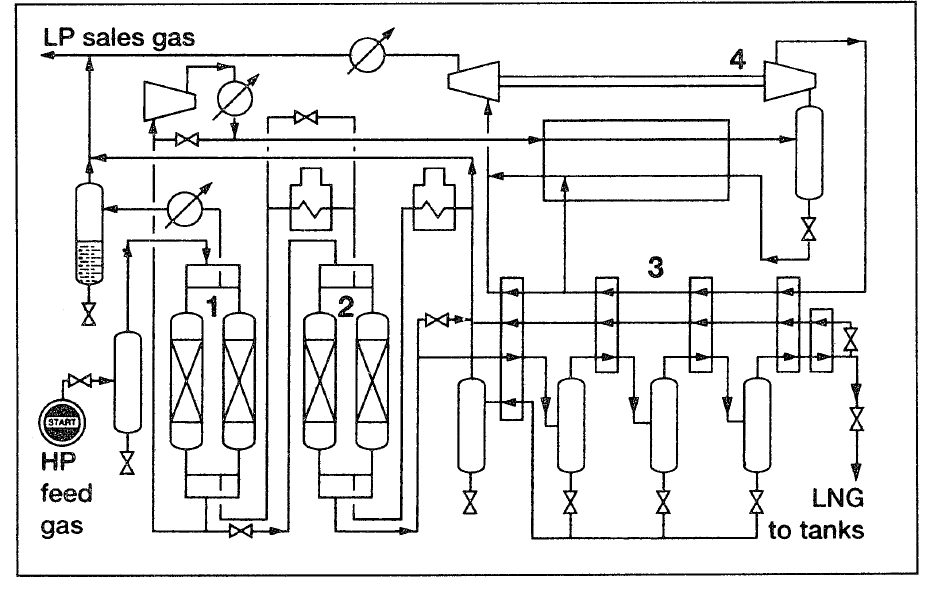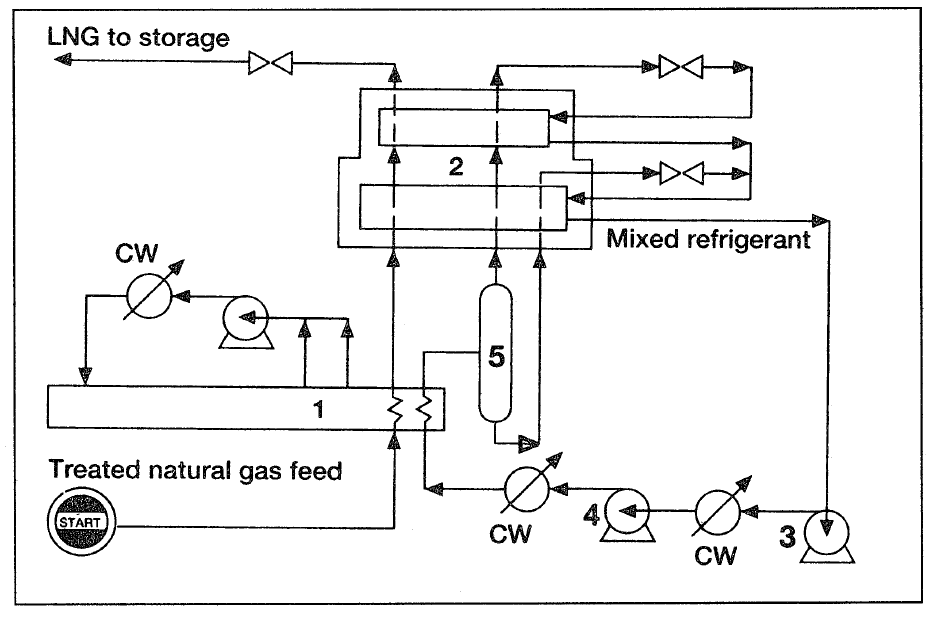


 علم الكيمياء
علم الكيمياء 
 الكيمياء التحليلية
الكيمياء التحليلية 
 الكيمياء الحياتية
الكيمياء الحياتية 
 الكيمياء العضوية
الكيمياء العضوية 
 الكيمياء الفيزيائية
الكيمياء الفيزيائية
 الكيمياء اللاعضوية
الكيمياء اللاعضوية 
 مواضيع اخرى في الكيمياء
مواضيع اخرى في الكيمياء
 الكيمياء الصناعية
الكيمياء الصناعية |
Read More
Date: 22-8-2017
Date: 18-9-2017
Date: 18-8-2017
|
Liquefied Natural Gas (LNG)
After the recovery of natural gas liquids, sweet dry natural gas may be liquefied for transportation through cryogenic tankers. Further treatment may be required to reduce the water vapor below 10 ppm and carbon dioxide and hydrogen sulfide to less than 100 and 50 ppm, respectively. Two methods are generally used to liquefy natural gas: the expander cycle and mechanical refrigeration. In the expander cycle, part of the gas is expanded from a high transmission pressure to a lower pressure. This lowers the temperature of the gas. Through heat exchange, the cold gas cools the incoming gas, which in a similar way cools more incoming gas until the liquefaction temperature of methane is reached. Figure 1 is a flow diagram for the expander cycle for liquefying natural gas.
Figure 1. Flow diagram of the expander cycle for liquefying natural gas:

(1) pretreatment (mol.sieve), (2) heat exchanger, (3) turboexpander.
In mechanical refrigeration, a multicomponent refrigerant consisting of nitrogen, methane, ethane, and propane is used through a cascade cycle. When these liquids evaporate, the heat required is obtained from natural gas, which loses energy/temperature till it is liquefied. The refrigerant gases are recompressed and recycled. Figure 2 shows the MCR natural gas liquefaction process.
Figure2. The MCR process for liquefying natural gas:15 (1) coolers, (2) heat
exchangers, (3,4) two stage compressors, (5) liquid-vapor phase separator.



|
|
|
|
تفوقت في الاختبار على الجميع.. فاكهة "خارقة" في عالم التغذية
|
|
|
|
|
|
|
أمين عام أوبك: النفط الخام والغاز الطبيعي "هبة من الله"
|
|
|
|
|
|
|
قسم شؤون المعارف ينظم دورة عن آليات عمل الفهارس الفنية للموسوعات والكتب لملاكاته
|
|
|